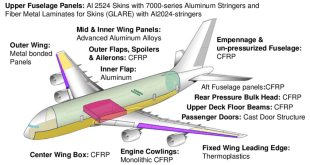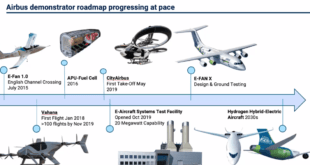In recent years, a number of groups have begun researching and building vehicles that can smoothly transition from water to air and back again.
Among these new platforms are the Naviator, a multicopter unmanned aircraft system (UAS) from Rutgers School of Engineering, a quadrotor called CRACUNS built by Johns Hopkins University Applied Physics Laboratory, and the Loon Copter, built by Oakland (Michigan) University’s Embedded Systems Research Laboratory. The latter won the $1 million grand prize at the recent UAE Drones for Good Award.
The Office of Naval Research has awarded Rutgers University a grant to develop a drone – equally adept at flying through the air and navigating underwater – that could speed search-and-rescue operations, monitor the spread of oil spills and even help the Navy rapidly defuse threats from underwater mines
Researchers at Rutgers University have developed the ‘Naviator’ drone, designed to be able to plunge almost ten meters into the water and surface and fly from that depth, if necessary. The quadcopter, called the Naviator, is the first successful hybrid aerial-aquatic drone, according to the Office of Naval Research (ONR).
“Waterfowl are still better at flying than swimming, and flying fish are still better at swimming than flying. Our device is equally adept at both, In a sense, we are defying nature rather than emulating it, said Javier Diez, a professor in the Department of Mechanical and Aerospace Engineering.
Rutgers University have developed the ‘Naviator’ drone
The current model is capable of carrying a 360 degree waterproof camera, according to Dr. Marc Contarino, Vice President of technology for the Naviator program, which was used for the bridge and boat inspection test launch. However, with the sponsorship of the ONR, the development team is also designing the Naviator with an eye toward Naval operations.
The development team is already planning the next generation Naviator. The goal is to create a version that is six feet in diameter and can carry a 30-pound mine countermeasure technology payload. It is also designed to achieve higher underwater depths, up to 30 meters.
Work is also being done to develop the Naviator’s abilities to map the ocean floor or perform search and rescue missions, according to the Association for Unmanned Vehicle Systems International. The Naviator team sees commercial applications, such as bridge inspections, data collection, and mapping.
“The Naviator’s ability to seamlessly and rapidly transition from flying in the air to maneuvering underwater provides tremendous opportunities for…naval operations,” said Professor F. Javier Diez of the Rutgers-New Brunswick School of Engineering. “As these recent tests demonstrated, what previously might require a helicopter, boat, and underwater equipment, the Naviator was able to complete as a single deployment with fewer complications and in less time.”
Potential naval Applications
Diez predicts many potential applications. For search and rescue, for instance, the vehicle could scan the water from above to locate missing swimmers and sailors, and upon spotting shipwreck debris could dip inspect underwater structures underwater to further examine the scene. At an oil spill site, it could map the spread of a spill and see how deep the plume reaches.
An air-and-water drone could also help engineers, such as bridge and dock piers, ship hulls and oil drilling platforms. “Mines are probably the biggest problem for the Navy,” said Diez. “They need to map where mines are. Now there are a lot of false positives. This could be a better technology to rapidly investigate these potential threats.”
And in naval warfare, a fleet of drones could be stationed out of sight in an underwater base or on a submarine. The drones could emerge quickly from the depths, get a quick glimpse of enemy ship deployments, and then hide again.
Technology
“What we did was we decided we had two sets of propellers, the propellers above and the propellers below,” he said. “There is a sensor that detects when the drone is in the water. It shuts off the upper propeller, and the lower propeller pulls it into the water seamlessly and smoothly.”
Diez acknowledges that much work needs to be done. For example, the models that he and his students have demonstrated are tethered by a thin wire to a controller, as typical radio signals can’t penetrate the water. To cut the cord, engineers will study ways to control vehicles acoustically – with sound pulses instead of radio waves.
Once the drone is underwater, both sets of propellers kick back in but at a much slower speed. This allows the Naviator to run for as long as 24 hours in the water, compared to one hour of flight time. The drone is operated using radio waves and a regular drone controller, though this method of navigation becomes problematic as soon as it hits the water.
“You really can’t communicate [with the drone] under water,” Benyo said. “Radio signals just die, within a few meters. So you really can’t use normal radio communications. The normal controls just won’t work.”
There are limited ways to communicate under water using ultrasound, “and we’re in the process of refining that,” he added. “But basically, you got to program it, set it free, and have it come back to you.”
CRACUNS built by Johns Hopkins University Applied Physics Laboratory
Researchers at the Johns Hopkins University Applied Physics Laboratory in Laurel, Maryland, have developed an innovative unmanned aerial vehicle (UAV) that can stay on station beneath the water, then launch into the air to perform a variety of missions. The Corrosion Resistant Aerial Covert Unmanned Nautical System — or CRACUNS — is a submersible UAV that can be launched from a fixed position underwater, or from an unmanned underwater vehicle (UUV).
The CRACUNS is designed to remain deeply submerged for long periods of time. Vehicles could be hidden away underwater until needed, then, at a predetermined signal, launched to perform their mission. Murdock says the signal could be transmitted either by radio, in which case the vehicle would be tethered to a small buoy, or by acoustic signaling. After that, a CRACUNS is autonomous—it would deploy and carry out whatever instructions had been pre-loaded into it.
“Engineers at APL have long worked on both Navy submarine systems and autonomous UAVs,” said Jason Stipes of APL’s Sea Control Mission Area, project manager for CRACUNS. “In response to evolving sponsor challenges, we were inspired to develop a vehicle that could operate both underwater and in the air.” The resulting CRACUNS prototype system was developed and tested using internal research and development funding.
CRACUNS enables new capabilities not possible with existing UAV or UUV platforms. Its ability to operate in the harsh littoral (shore) environment, as well as its payload flexibility, enables a wide array of potential missions.
The most innovative feature of CRACUNS is that it can remain at and launch from a significant depth without needing structural metal parts or machined surfaces.
To make that possible, the team needed to overcome two big challenges. First, the APL team leveraged advances in additive manufacturing and novel fabrication techniques available at the Laboratory’s extensive fabrication facilities. The team fabricated a lightweight, submersible, composite airframe able to withstand the water pressure experienced while submerged.
The second significant challenge was to ensure CRACUNS could not just survive, but operate effectively in a corrosive saltwater environment. To do that, the APL team sealed the most sensitive components in a dry pressure vessel. For the motors that are exposed to salt water, APL applied commercially available protective coatings. The team tested the performance of the motors by submerging them in salt water. Two months later, they showed no sign of corrosion and continued to operate while submerged.
“CRACUNS successfully demonstrated a new way of thinking about the fabrication and use of unmanned systems,” said APL’s Rich Hooks, an aerospace and mechanical engineer who was responsible for the novel additive manufacturing techniques used on CRACUNS.
CRACUNS gives sponsors and researchers access to possibilities that were previously unavailable. CRACUNS’ low cost makes it expendable, allowing for the use of large numbers of vehicles for high-risk scenarios.
The CRACUNS team also developed a series of mini CRACUNS, a vehicle half the size of the original that can be folded into a 12-inch round tube and launched from an unmanned underwater vehicle (UUV). “It carries fewer batteries and still gives us the same amount of performance, which is huge,” said APL mechanical engineer Richard Hooks.
Winning Idea of Oakland (Michigan) University
Researchers at Oakland (Michigan) University’s Embedded Systems Research Laboratory have also developed amphibious drones , the Loon Copter, that is based on a DJI Phantom 3, but has a larger bottom barrel that fills with ballast water. Once it sinks (only to a few meters for now), it turns 90 degrees and moves through the water. By ejecting its ballast water it can rise back to the surface and either skim along the surface—while holding sensors under water if desired—or take off back into the air.
Like the Naviator and CRACUNS teams, Loon Copter’s makers see potential for search and rescue, environmental monitoring and inspections.
The team won the International category in the UAE Drones for Good Award and $1 million USD to further develop the prototype.
References and Resources also include:
https://defensesystems.com/articles/2017/08/18/navy-office-of-naval-research-drone.aspx
http://insideunmannedsystems.com/new-class-uas-go-water-air-back/
http://www.jhuapl.edu/newscenter/pressreleases/2016/160317.asp
 International Defense Security & Technology Your trusted Source for News, Research and Analysis
International Defense Security & Technology Your trusted Source for News, Research and Analysis


